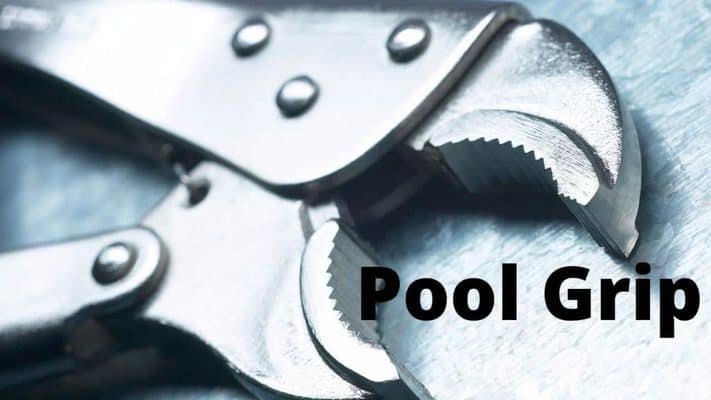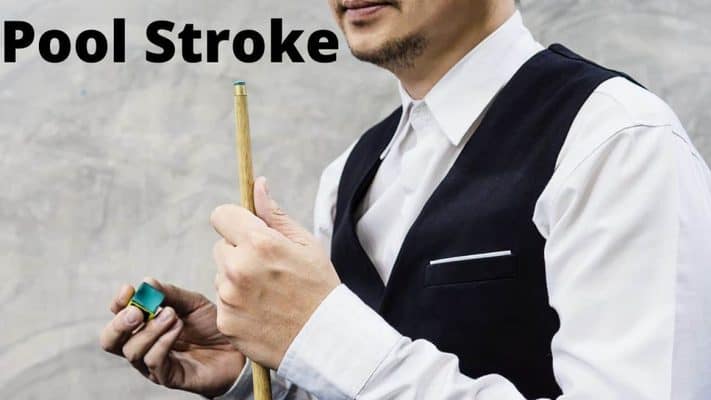Pool players are always looking for ways to improve their stroke. Making little tweaks here and there over a period of time until they feel comfortable with the end result.
A good end result is a stroke that is simple and easily repeatable under pressure without the stroke breaking down.
However, constantly “tinkering” with your stroke is not such a good idea and means that you never really get to trust your stroke for long enough for it to become a part of your game. Instead, you change it every couple of days never making it consistent.
So we are going to fix that right now.
What Does “Trust Your Stroke” Actually Mean?
If you have to think about your:
- Grip
- Fingers
- Wrist
- Pauses
- Tempo
- Eyes
……. then you don’t trust your stroke yet.
What this means is that you are still checking the movement of your cue whilst taking shots and making conscious adjustments to your stroke. Now you can probably get away with this while you are practicing in the pool hall or on your table at home but under the cosh it is a different matter entirely.
Why Do You Need To Trust Your Stroke?
The human conscious mind is very good at what it does but its resources are limited. It has a limited ability to do complex calculations and is easily overloaded
In pool, the conscious mind is best at making simple decisions and should be confined to:
- making shot decisions
- assessing tactics
- planning position routes
- pattern recognition
These decisions are best made while you are still in a standing, pre shot, position behind the ball.
Your thinking brains’ ability to take care of multiple tasks at the same time diminishes the more tasks that are added and the more importance that you assign to the situation.
Leave your stroke and all its components to the part of your brain best equipped to deal with multiple, minute details at the same time, your subconscious.
The Complexity Of The Pool Stroke.
When humans walk upright they use up to 200 muscles just to take a step forward. These muscles range from the huge quadriceps muscle group in the thighs down to the tiny flexor hallucis longus in their big toe. Each of these muscles is connected by tendons to bones and receives 1000s of compensating instructions via the central nervous system every millisecond.
But we never have to think about taking even one step while walking.
Even looking back to our time as a baby, learning to walk was accomplished by copying others and through trial and error. We all fell down many times until we finally got it and then we got progressively better at walking until we didn’t need to think about it anymore, ever.
This is how you need to train and execute the pool stroke which is a very complex set of tiny movements that can only be carried out by your subconscious mind after sufficient initial stroke training.
Never use your conscious mind for precise muscle control, it cannot cope with the complications of stroke mechanics during the actual shot.
So What Can You Do To Help Your Brain Cope With The Pressure?
You must divide your shot process into two separate but unified parts.
- Conscious decisions must be made before you get into your full stance.
- No thinking about the shot after you get into shooting position.
This process is covered in more detail in the information about the pre shot routine and is not the goal of this article. Please check back there to remind yourself of the process if needed.
It is important to give the thinking brain something important to do, it has a large ego and doesn’t think that you can do anything without its assistance. Keep your conscious thoughts occupied on simple processes like:
- Controlling your breathing exercises
- Having a good posture in the chair
- Your pace around the table
- Keeping a positive attitude thought the match
- Good Sportsmanship
Keep it involved but whatever you do don’t let it play!
Can You Play With Your Eyes Closed?
If you trust and have faith in your stroke to deliver the cue tip where intended time after time then you should be able to perform the same actions with your eyes closed.
This must be true unless you are making manual adjustments based on visual feedback to the brain as you play your pool shots.
Usually you will see this as a demonstration of a trick shot routine or a player just messing around but playing with you eyes closed has some real life benefits to pool players.
When I first tried this I was lucky to even hit the white ball without a miss-cue. Playing with my eyes shut exposed all kinds of weaknesses in my stroke and alignment.
I didn’t trust trust my stroke at all, not for a instant and I was monitoring every movement I made all the way through. In fact if I could see my cue I started to panic a little, total control freak in fact.
How To Do It In Practice.
So lets try this out, set up a simple straight shot from the spot to the corner with the cue ball placed 12 inches behind. Go through your usual pre shot routine making all of your normal decisions. Get into you full stance address position. Go through your warm up strokes as normal. Then, as you pause at the cue ball for the last time, close your eyes before your final backswing and keep them closed. Draw the cue back, then stroke through the ball to a finish position. Do not open your eyes until you hear the ball hit the back of the pocket or a nearby rail.
Once you have this down pat you can move onto the advanced version which involves closing your eyes at the set position before starting your warm up strokes / feathers. This is much more difficult and you do need to stay relaxed and trust your stroke 100% to pull it off correctly.
What Are The Benefits Of Playing With Your Eyes Closed?
It forces you to rely on your pre shot routine.
It makes you let go of conscious control.
You have to believe in your stroke.
Enhances awareness of non visual stimuli, hearing, touch and feel.
Gives you invaluable feedback on your stroke.
One of the things that I really noticed when I played with my eyes shut was how my senses immediately reacted to the situation. Pool is a very visual game, so my brain started to enhance my other senses to compensate. I became very aware of my 4 points of contact with my cue, the bridge V, the chin, the chest and my back hand.
So, Where Should Your Eyes Be When You Strike The White Ball?
After reading this article on How To play pool with your eyes closed the question of “where your eyes should be and at what point in the stroke delivery they should be there” becomes very interesting, doesn’t it?
Clearly, so far as making the shot is concerned, it doesn’t matter, it can’t matter, because you can still make the ball with your eyes closed. So what is it about your eye location that is so important to pool and snooker players alike?
The answer is timing, that illusive feeling of the perfect hand eye coordination that is individual to each player and difficult to explain in words but that will be for another article.



